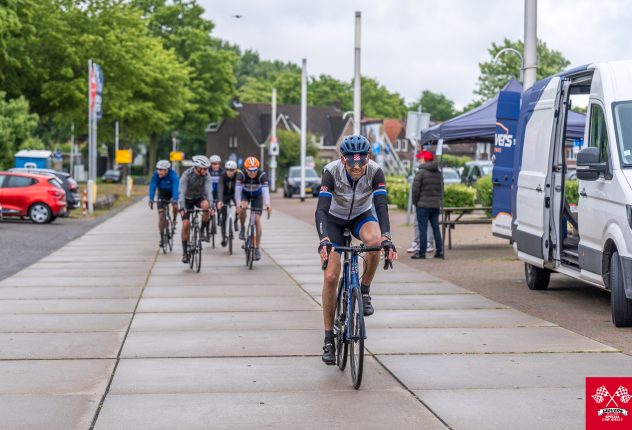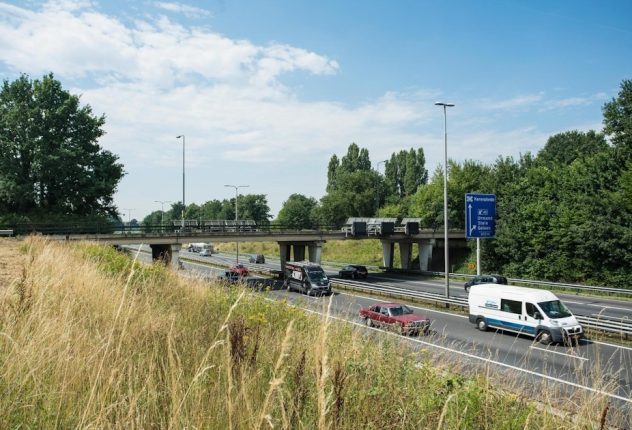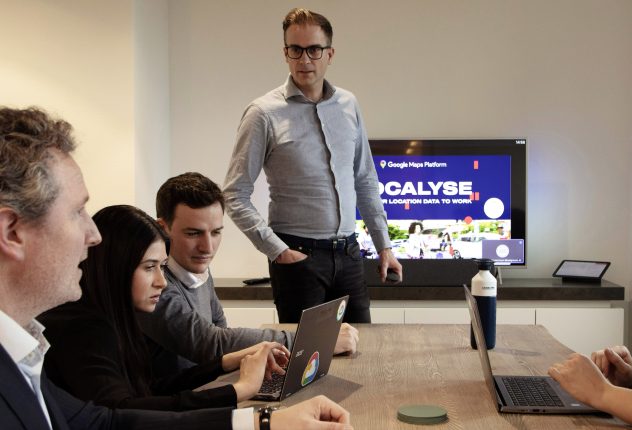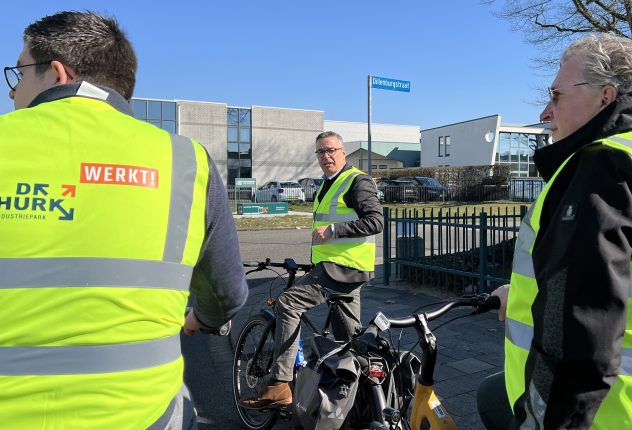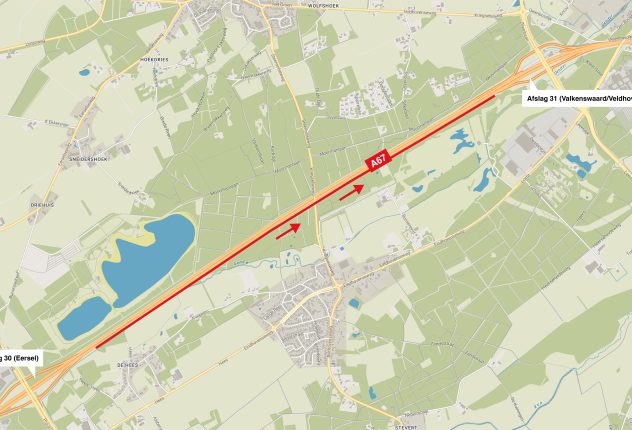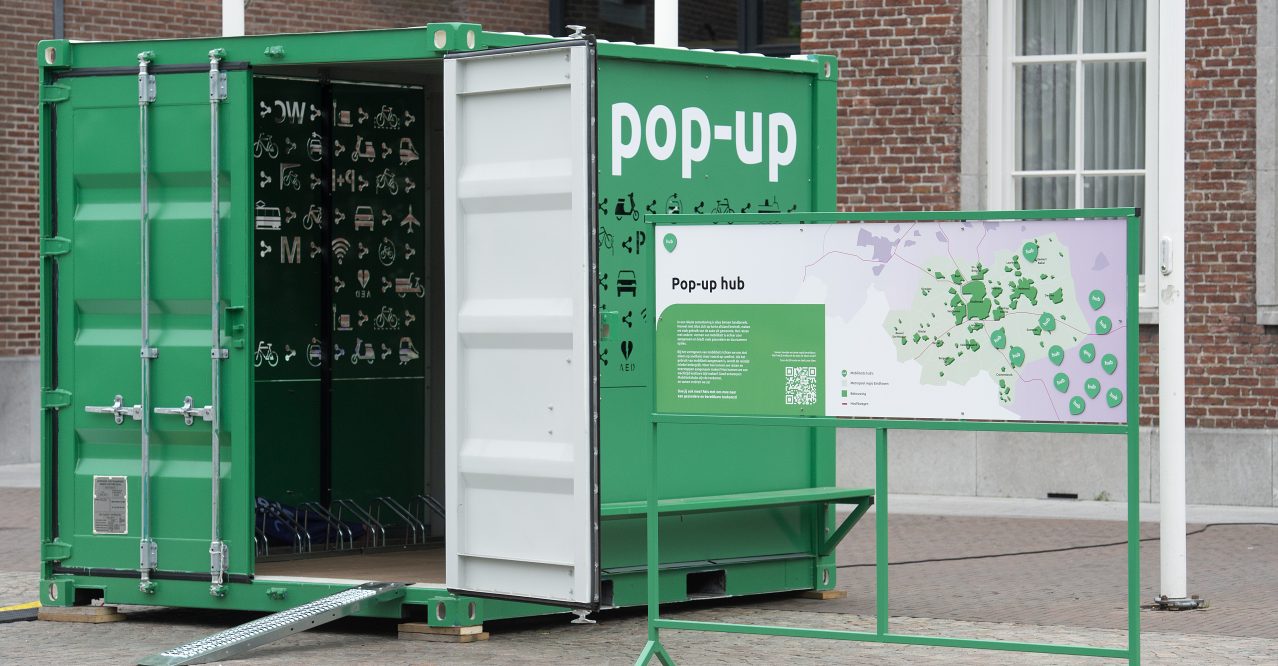
'Plan and act together for more green'
Published on May 21, 2024Take a bicycle or shared scooter to the station. Take the shared car to a work appointment. Once that is in your system, that second or third car can go out the door. And in the long term, so will the remaining car. That is cheaper, it saves crowds, pollution and, above all, a lot of space. It is therefore no wonder that municipalities are interested in shared mobility and hubs. But, says project leader for shared mobility Pierre van Veggel, we do have to think carefully about how we use this in the region. Brainport Bereikbaar is working on a development plan on behalf of the region.
Shared mobility? Isn't that really necessary in our village? Plenty of space. 'That argument is often correct. But only for now,” says Pierre. 'Because suppose that the planned new construction 30% brings more cars to your area. Are there still enough places at the supermarket? But more importantly, what if you turn it around? Suppose there are actually 30% fewer cars. This offers so many opportunities for a different, more sustainable and greener design of our environment. We really have to work on this with everyone: from residents and entrepreneurs to education and governments.'
The enormous benefits of green
So more space for greenery. In Pierre's view, this is the most important reason for shared mobility. 'More greenery gives us so many incredible benefits. Did you know, for example, that less medication for ADHD is needed in a green neighborhood or core 10% than in a comparable less green neighborhood? Wageningen University has done a lot of research to scientifically demonstrate the value of greenery in the city. This also shows, for example, that more trees in the street postpone age-related health complaints and reduce the number of premature births. Social cohesion also improves in green villages and neighborhoods and greenery demonstrably reduces heat stress. But the car places a significant claim on the available space for greenery: up to approximately 50% of public space is intended for cars. About 60% of all Dutch people do not have their own parking space. While a private car is stationary on average 96% percent of the time. These kinds of facts are fun, but telling about them is not enough. We must work to get people out of their own cars and into shared mobility.
Facilities and behavioral change needed
Good facilities and behavioral change are indispensable. 'Investments are already being made in facilities. For example, you see many shared scooters and cars in larger cities. But this lags behind in medium-sized cities and smaller centres. While you also need facilities there. Because if you can't take that shared car in your own village, you won't take one to the city either. But good facilities are not enough. We have to help people say goodbye to their cars. Insight into savings and revenues helps. Also a good tool for planning shared mobility. Just like taking away the worry that there is no shared bike or carpool buddy when you need it. Or provide personal advice and feedback. And there is much more we can do.'
Development plan of and for the region
In order to properly coordinate all these facilities, measures and actions in the region, Brainport Bereikbaar draws up a development plan at the request of the region. 'This includes, among other things, what is needed and where in terms of shared mobility and hubs. In all forms: shared riding, hitchhiking, shared cars, shared scooters, shared bicycles. At bus stops, district buildings, with lift columns, hubs at employers or at municipal parking spaces. We strive to have some form of transfer options in every center in the Brainport region. Sometimes maybe just a lift column or call bus, sometimes all the trimmings. In addition, we want the plan to provide a clear picture of what we need to use and where to ensure that people actually make use of this shared mobility.'
Leading role in collaboration
Of course, Brainport Bereikbaar cannot achieve these changes alone. 'It really has to come from society itself. That is why we explicitly involve municipalities, residents, companies, providers and educational institutions in the development of the plan. Brainport Bereikbaar is happy to take a leading role in this because municipalities have so many other things to do. We look at what they need. Hands to help, money, regional agreements with shared mobility suppliers? We will also include this in the development plan, as well as possible solutions. For example, I hope for a regional deal with suppliers of shared mobility.'
Just the right timing
The Development Plan must also describe how those hubs and shared mobility will be developed and paid for over the next 5 to 10 years. 'For residents who want to roll out an initiative, for employers who want to implement a service, for entrepreneurs who have an innovative idea, for the municipality that wants to provide an incentive package. Where the energy and ideas are, we must further strengthen them. This is good timing for it. There is the Beethoven deal with money for smart measures, public transport will be redesigned in 2027 and regional agreements are now being made about the regional mobility vision. In the meantime, there is so much we can do for the mobility transition and shared mobility. For more greenery and a better society.'
And in the meantime…
The plan must be ready by the end of this year, including a practical implementation agenda. 'In the meantime, we are not sitting still. We practice with all kinds of local shared mobility projects and investigate the effects. Just look at the use of our pop-up hub. We can scale up what works. Our role as spider in the web also allows us to share experiences. There is so much possible. For example, a neighborhood hub with electric cars can eventually also function as a neighborhood battery. There are concepts where you can also make your lease car available to others. This allows you to recoup part of your lease costs. And in Gemert-Bakel, the municipality has shared cars for employees that residents can also use.'
-

Pierre van Veggel
Project Leader Hubs and Shared Mobility
E-mail: Pierre.vanVeggel @brainportbereikbaar.nl
Get inspired
Do you want to keep Brainport accessible? Join us. We would be happy to discuss this with you. To work on opportunities, innovations and solutions. Because we can only do that together. Contact us at info@brainportbereikbaar.nl.

